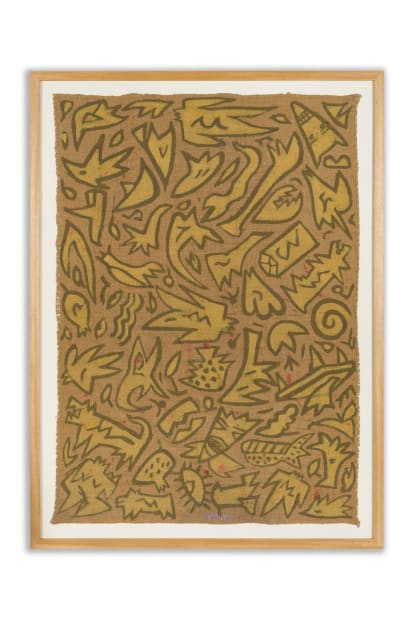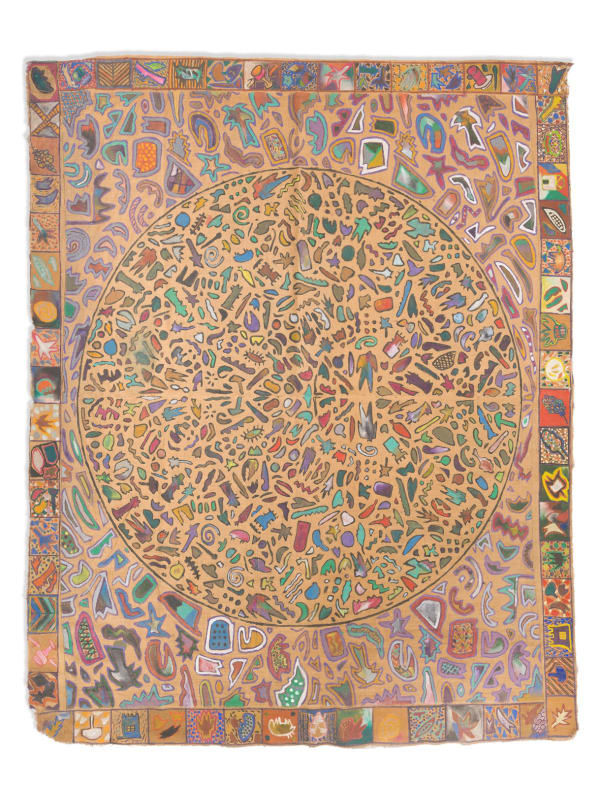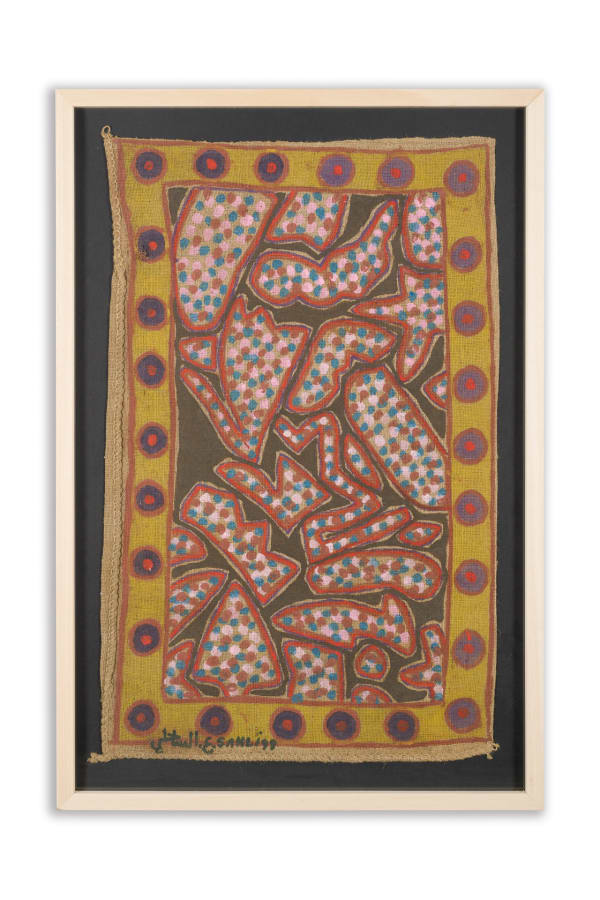-
Abderrazak Sahli was born in 1941 in Hammamet. He graduated from the School of Fine Arts in Tunis in 1969, continued his studies in fine arts at the University of Paris VIII, and lived in France until 1987. In 1985, he joined the "Docks", nomadic artists with whom he produced vocal and visual performances. He participated in the 1971 Paris Biennial and held solo exhibitions in Tunisia, France, Germany, Japan and England.
-

Untitled, 1999, Acrylic on burlap, 140h x 108w cm, Unique
-

Untitled, 1999, Acrylic on burlap, 157h x 115w cm, Unique
-
Quotes on the work of Abderrazak Sahli from Rachida Triki The Art of the Counterpoint:
"Actually, all the art of Abderrazek Sahli is his ability to play with paradoxes of the picture in a creative aesthetic way”
"The proliferation of picturesque elements between transperency and superimposition, livens up the flatness of the work and sets up a sensorial reception mode, with his alternation of bright colours and neutral tones, the surface of the paintings are no more than pure sensations.”
Abderrazak Sahli
Previous viewing_room




